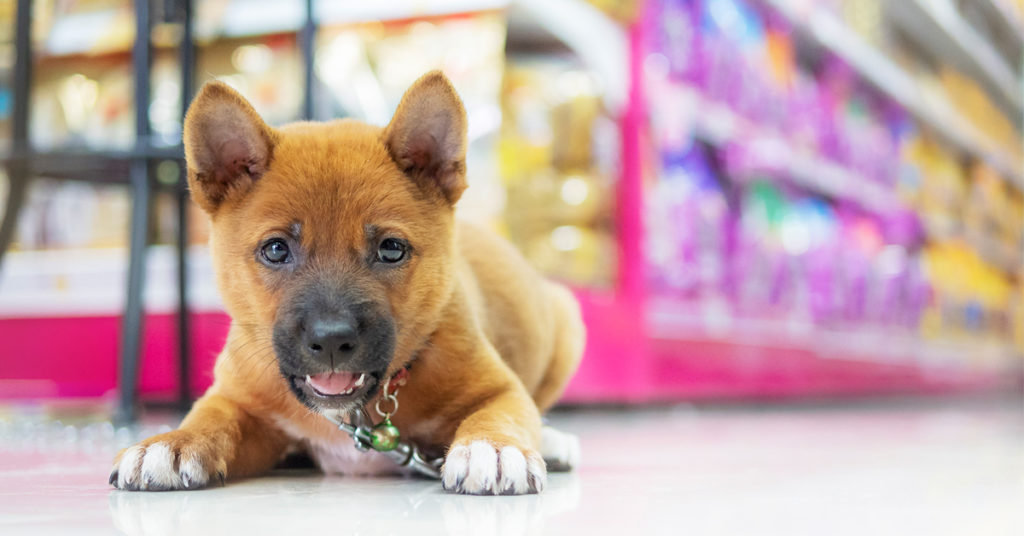Private label pet food offers retailers lower costs, bigger margins and more opportunity for product innovation. Here’s what you should know before getting started.
Private label pet food is fast becoming a popular option for retailers looking to win more customers and increase share of wallet. In this blog, we provide a brief overview of the current pet food market, including a few things retailers should consider before starting their own private label pet food program.
With that in mind, let’s take a holistic look at the pet food market – starting with why it’s actually growing.
Part I. Pet Food Market Growth
The pet food market is growing, which means it’s a great time for retailers to get their foot in the door. This growth can be attributed to two major factors:
#1. Rise in Pet Humanization & Pet Ownership
The cultural shift in the humanization of pets (and resulting premiumization of pet food) continues to be an important market growth driver.
Pet parents expect the best for their pets. They want a more diverse menu of products and more flexible and convenient buying options.
This greater demand for variety is compounded by the fact that there are more pet owners now than ever.
Indeed, despite a global health crisis, economic downturn and job market upheaval, U.S. pet ownership is projected to grow 4% by the end of 2020, bringing the total number of pet-owning households to nearly 71 million. And of those households, 94% are dog and cat owners.
In short, as discerning consumers continue to buy more pets, the pet food market will continue to grow.
#2. Emergence of Private Label Pet Food
The increase in pet humanization and ownership has given way to an explosion of private label pet food.
What pet parents could previously only find in specialty pet stores can now be found in bigger, mass-market grocers. This means stiffer competition for wallet share in supermarket and drug store pet food aisles.
What was once a few shelves of value-priced dog and cat food products has undergone what experts call “mass premiumization,” resulting in a growing array of options catered toward those with elevated tastes and budgets.
Let’s take a look at those options now.
Part II. Pet Food Product Tiers
As the market continues to grow, so does the number of pet food products. So, before building your own private label pet food program, first consider where your product (or product line) will fit.
#1. Super Premium
The super premium pet food tier is ideal for higher-end retailers looking to capitalize on pet food trends.
Pet Parent Profile
Consumers in the super premium tier are looking for:
- The highest-quality ingredients
- Real meats, grain-free formulas
- Exotic tastes, like lamb or duck
- Unique logos or bag designs over price tag
#2. Premium
Premium is an increasingly popular tier for retailers with discerning customers who value palatability and digestibility over price.
Pet Parent Profile
Consumers in the premium tier are looking for:
- Higher-quality ingredients
- Real meat or meat meals as the top ingredients
- No byproducts
- Grain-free or higher-quality grains
- No dyes
- Natural preservatives
#3. Mainstream
Mainstream pet foods give equal weight to digestibility, palatability and price. They are typically found in a supermarket or drug store versus specialty stores like PetSmart or Petco.
Pet Parent Profile
Consumers in the mainstream tier are looking for:
- Byproduct meals or pure meals
- Higher-quality grains
- A formulation that is attractive to pet palettes and their wallets
#4. Value
Value pet food products appeal to customers who are primarily focused on price.
Pet Parent Profile
Consumers in the value tier are looking for:
- Reasonable prices
- Safe pet food
These pet parents are less likely to examine the ingredient list, which usually include meat byproduct and corn or wheat.
Part III. Entering the Pet Food Market
With this product hierarchy in mind, you have a clearer lens through which to examine your pet food sales opportunities.
To get started, ask yourself the following questions:
- What type of products are most successful at your store?
- Do they fall into one tier or many?
- Is your average customer price-driven?
- How likely are your customers to examine the ingredient list and package design?
Once you have the answers to these questions, you’ll know what to prioritize in your pet food program.
A qualified pet food manufacturer will have some house formulas that may fit your needs or will be able to work with you to develop a custom formulation. Keep in mind that the more specifications you require, the higher the minimum order and cost will be. So, do your due diligence.
Conclusion
Entering the private label pet food market is a smart play for growing retailers. But it’s a competitive market, so focus on what you know and consider delegating the rest. For most retailers, this means everything that happens before the product hits the shelf. When you’re ready, an experienced pet food partner can help you study your local market, choose the right products, and then manufacture them safely at scale, giving you a strategic leg-up on competitors.
Alphia helps private label brands develop market-leading pet food from concept to distribution. Let us know about your pet food needs.
